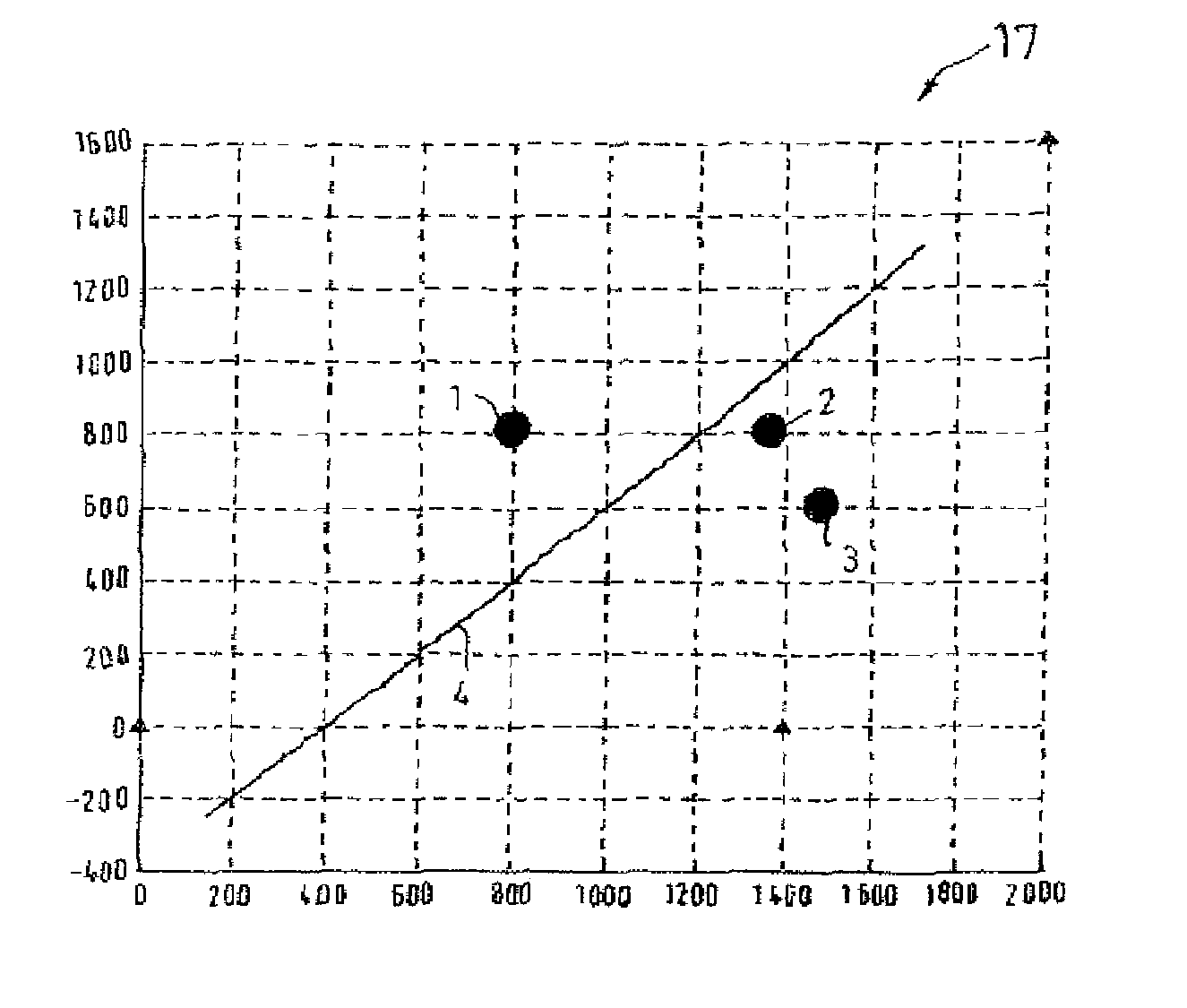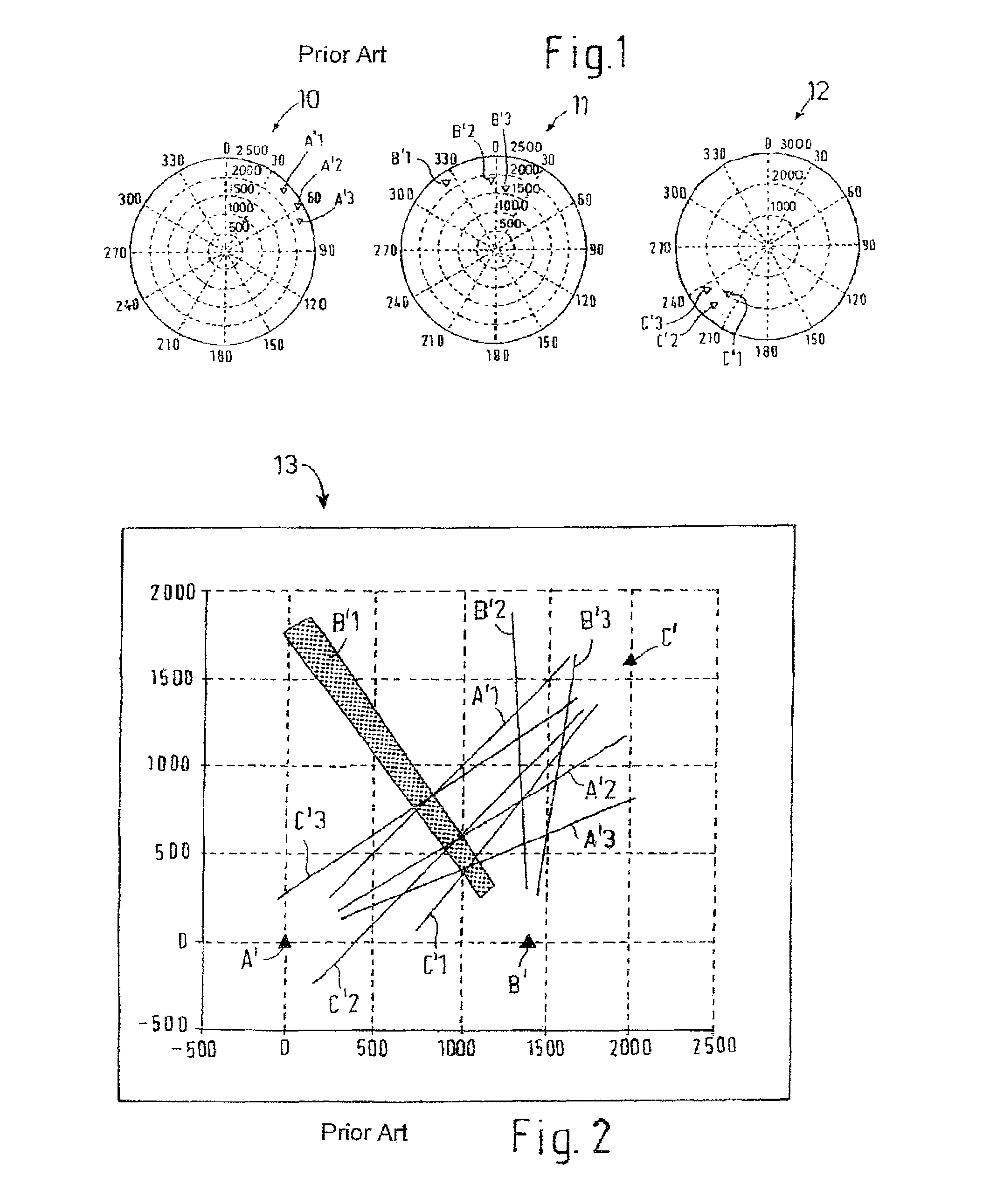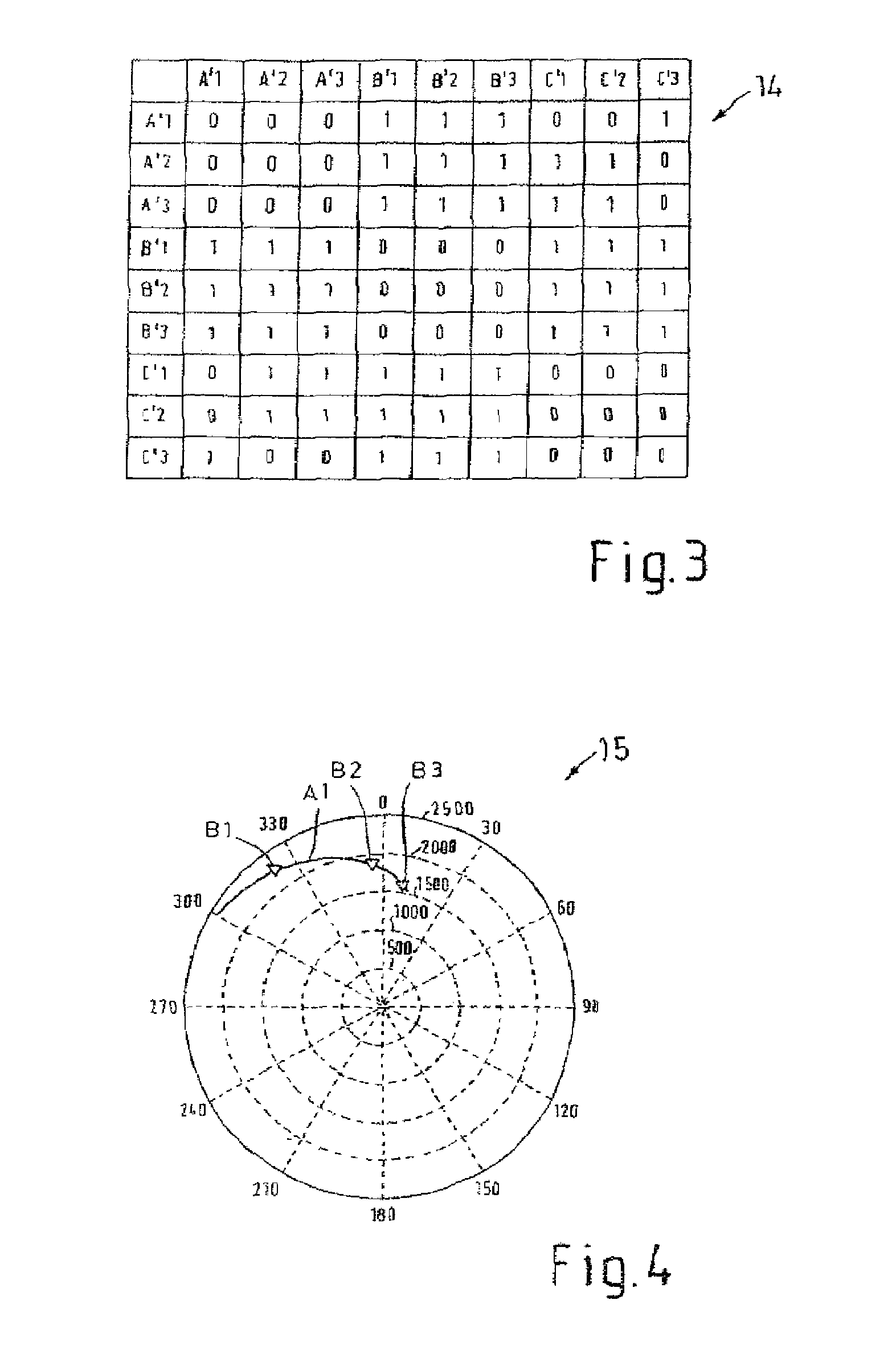Method for surveillance of space/air space
a sensor system and air space technology, applied in the direction of reradiation, using reradiation, radio wave reradiation/reflection, etc., can solve the problems of insufficiently resolving the problem of only inadequately resolving the problem of measurement errors, difficult to associate targets that are flying physically closely together using known methods, and increasing the probability of incorrect association of measurement errors. , to achieve the effect of sufficient accurate association of targets and minimizing the time required
- Summary
- Abstract
- Description
- Claims
- Application Information
AI Technical Summary
Benefits of technology
Problems solved by technology
Method used
Image
Examples
Embodiment Construction
[0027]FIG. 1 shows a display 10 of a first search radar sensor A and a further display 11 of a second search radar sensor B, as well as a third display 12 of a third search radar sensor C according to the prior art. The range (in meters) and direction (in degrees) are shown on the display 10. Three targets are indicated, as A1-A3. Three targets are indicated as B1-B3 on the display 11 of the second search radar sensor B, and three targets are indicated as C1-C3 on the display 12 of the third search radar sensor C.
[0028]For correlation purposes, the measurements are converted to the geometry 13 of the higher-level Cartesian coordinate system. The position of each of the sensors A, B, C is required for this purpose.
[0029]FIG. 2 shows the illustration, as known from the prior art, of the measurement from FIG. 1 in the higher-level system. The radar positions which result in the display / geometries of the displays 10 to 12 are identified by A, B, C. In this case, the measurements are map...
PUM
 Login to View More
Login to View More Abstract
Description
Claims
Application Information
 Login to View More
Login to View More - R&D
- Intellectual Property
- Life Sciences
- Materials
- Tech Scout
- Unparalleled Data Quality
- Higher Quality Content
- 60% Fewer Hallucinations
Browse by: Latest US Patents, China's latest patents, Technical Efficacy Thesaurus, Application Domain, Technology Topic, Popular Technical Reports.
© 2025 PatSnap. All rights reserved.Legal|Privacy policy|Modern Slavery Act Transparency Statement|Sitemap|About US| Contact US: help@patsnap.com



